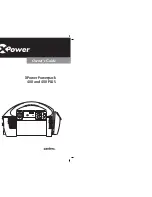
409-32048
Rev A
30
of 64
Print -
Press this button to print the charts on a printer. The printer driver must be installed using the standard
windows method.
7.
PRESSING TOOLS
This section defines general requirements for connector pressing tools that will be used in the CAP. In many
cases, insertion tools used in manual pressing operations can be adapted to the CAP. The guidelines below
must be followed in order to ensure optimum performance.
Separate requirements for insertion tools and support fixtures are given below. “Insertion Tools” are those tools
that are used to engage and press the connectors into the PCB. They generally press on the pin tips, pin
shoulders, or connector housing (flat rock). Every connector uses an “Insertion Tool”. Support fixtures are used
to support the PCB below the connector being pressed and are sometimes referred to as a “platen”.
7.1.
Insertion Tools
See Figure 32 for insertion tooling information.
CAUTION
Consideration must be given to any portion of the fixture that is close to the fixture mount plate side rails and the tool rack
areas, to ensure that the fixture height and the Press tool length are adequate to prevent the press head from contacting these
areas during pressing.
—
Width -
Up to 25.4 mm [1.00 in.], including any mounting features.
—
Height
–
56.8mm +/- 0.5 mm [2.236 ±.020 in.] including mounting plate (tool bar).
—
Length -
Up to 203 mm [8 in.], single or multiple tool combination.
—
Tool Bar -
The tools will be mounted on a “Tool Bar”. Each plate is encoded with a unique code which
provides a specific tool ID. Zero is not allowed. Number 1 is reserved for the calibration/thickness tool.
—
Mounting -
The tool must be mounted precisely centered ±0.05 mm [±0.002 in.] on the plate, and
parallel with the tool bar edges. It is a good practice to dowel the tool in place when possible. Please
note the orientation of the tool ID on the tool bar; it must always face down when the tool is loaded into
the machine. Do not drill a hole in the pressing tool at the center hole position in the tool holder.
—
Lead-In Chamfers -
There must be lead-in chamfers on the tool, the connector, or preferably both. The
capture provided should be at least 0.38 mm [.015 in.] in any direction, but more is better. The tool
should, when possible, engage the plastic before the pins begin to enter the pressing tool. For tools
that press on the pin tips rather than shoulders, generous lead-in (countersinks) should be provided
around the holes to capture the pins. The floating head will guide the tool into the connector using
these capture features.
—
Tool Rack
–
The fixed tool rack is capable of holding (13) tools: (1) thickness probe and (12) customer
tools.
Figure 32
















































